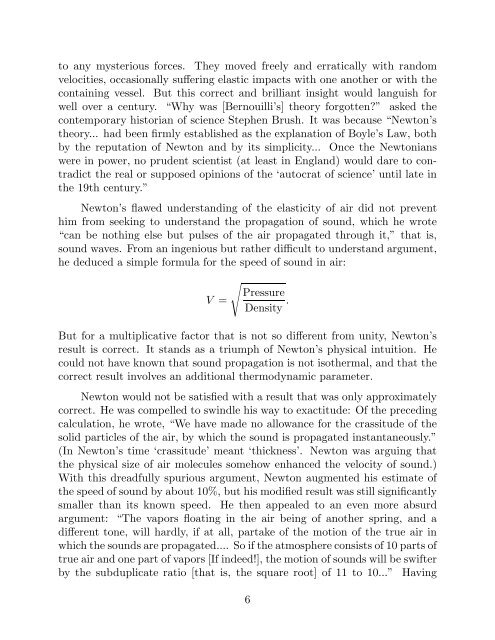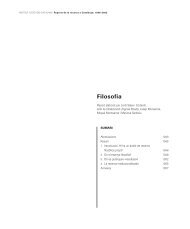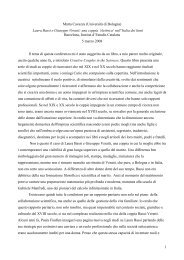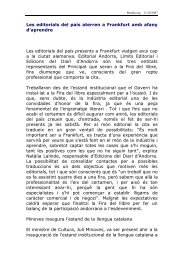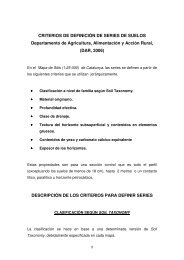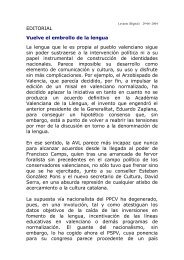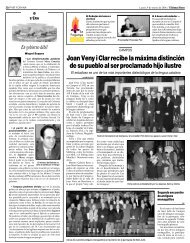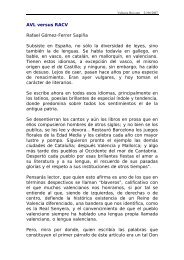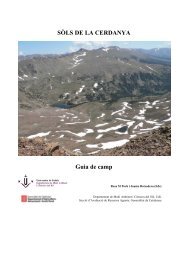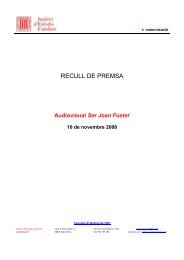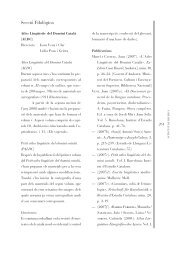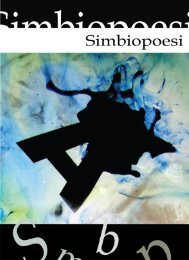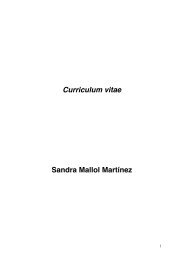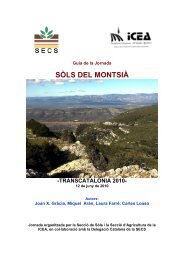The Errors & Animadversions of Honest Isaac Newton by Sheldon ...
The Errors & Animadversions of Honest Isaac Newton by Sheldon ...
The Errors & Animadversions of Honest Isaac Newton by Sheldon ...
You also want an ePaper? Increase the reach of your titles
YUMPU automatically turns print PDFs into web optimized ePapers that Google loves.
to any mysterious forces. <strong>The</strong>y moved freely and erratically with randomvelocities, occasionally suffering elastic impacts with one another or with thecontaining vessel. But this correct and brilliant insight would languish forwell over a century. “Why was [Bernouilli’s] theory forgotten?” asked thecontemporary historian <strong>of</strong> science Stephen Brush. It was because “<strong>Newton</strong>’stheory... had been firmly established as the explanation <strong>of</strong> Boyle’s Law, both<strong>by</strong> the reputation <strong>of</strong> <strong>Newton</strong> and <strong>by</strong> its simplicity... Once the <strong>Newton</strong>ianswere in power, no prudent scientist (at least in England) would dare to contradictthe real or supposed opinions <strong>of</strong> the ‘autocrat <strong>of</strong> science’ until late inthe 19th century.”<strong>Newton</strong>’s flawed understanding <strong>of</strong> the elasticity <strong>of</strong> air did not preventhim from seeking to understand the propagation <strong>of</strong> sound, which he wrote“can be nothing else but pulses <strong>of</strong> the air propagated through it,” that is,sound waves. From an ingenious but rather difficult to understand argument,he deduced a simple formula for the speed <strong>of</strong> sound in air:V =√PressureDensity .But for a multiplicative factor that is not so different from unity, <strong>Newton</strong>’sresult is correct. It stands as a triumph <strong>of</strong> <strong>Newton</strong>’s physical intuition. Hecould not have known that sound propagation is not isothermal, and that thecorrect result involves an additional thermodynamic parameter.<strong>Newton</strong> would not be satisfied with a result that was only approximatelycorrect. He was compelled to swindle his way to exactitude: Of the precedingcalculation, he wrote, “We have made no allowance for the crassitude <strong>of</strong> thesolid particles <strong>of</strong> the air, <strong>by</strong> which the sound is propagated instantaneously.”(In <strong>Newton</strong>’s time ‘crassitude’ meant ‘thickness’. <strong>Newton</strong> was arguing thatthe physical size <strong>of</strong> air molecules somehow enhanced the velocity <strong>of</strong> sound.)With this dreadfully spurious argument, <strong>Newton</strong> augmented his estimate <strong>of</strong>the speed <strong>of</strong> sound <strong>by</strong> about 10%, but his modified result was still significantlysmaller than its known speed. He then appealed to an even more absurdargument: “<strong>The</strong> vapors floating in the air being <strong>of</strong> another spring, and adifferent tone, will hardly, if at all, partake <strong>of</strong> the motion <strong>of</strong> the true air inwhich the sounds are propagated.... So if the atmosphere consists <strong>of</strong> 10 parts <strong>of</strong>true air and one part <strong>of</strong> vapors [If indeed!], the motion <strong>of</strong> sounds will be swifter<strong>by</strong> the subduplicate ratio [that is, the square root] <strong>of</strong> 11 to 10...” Having6


